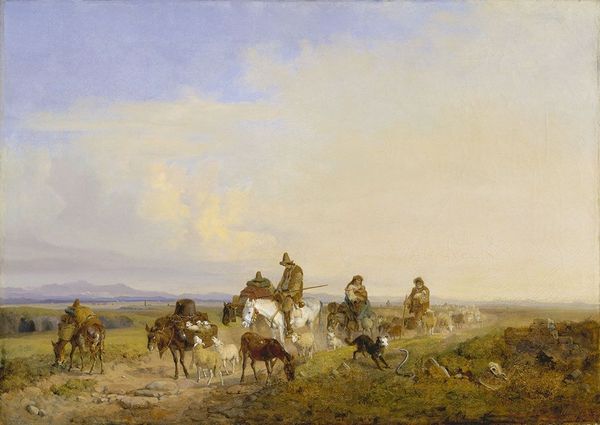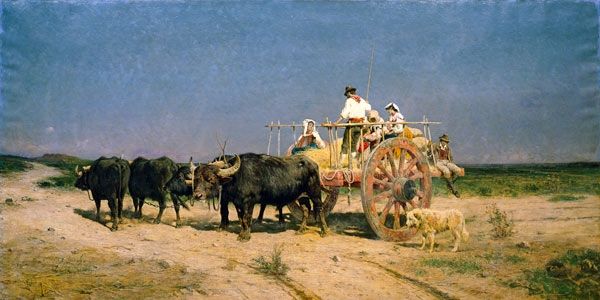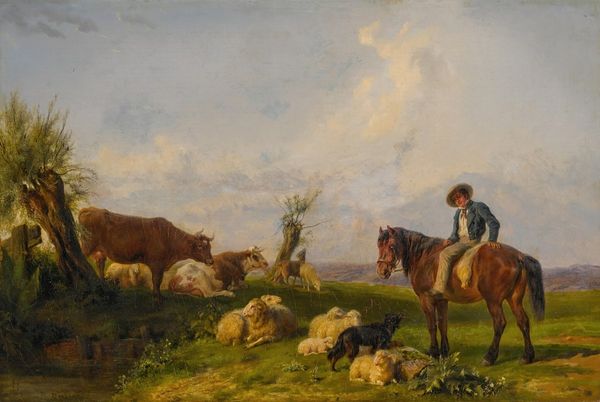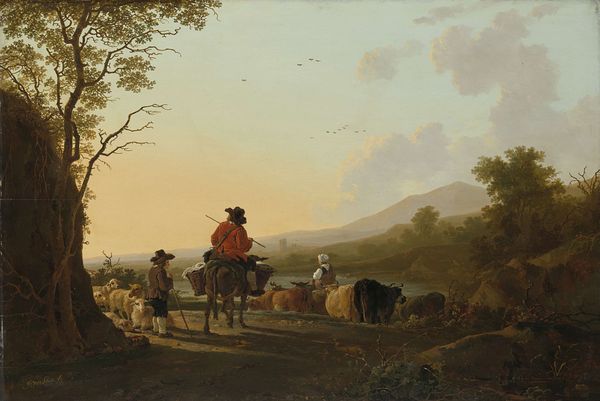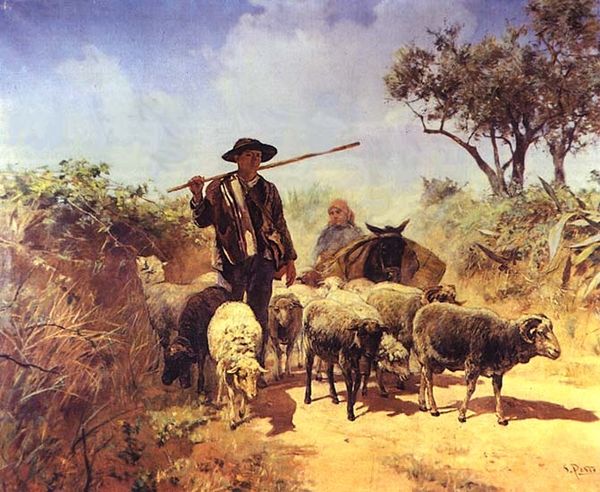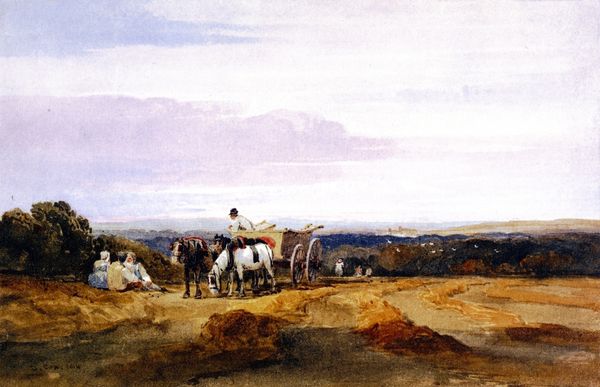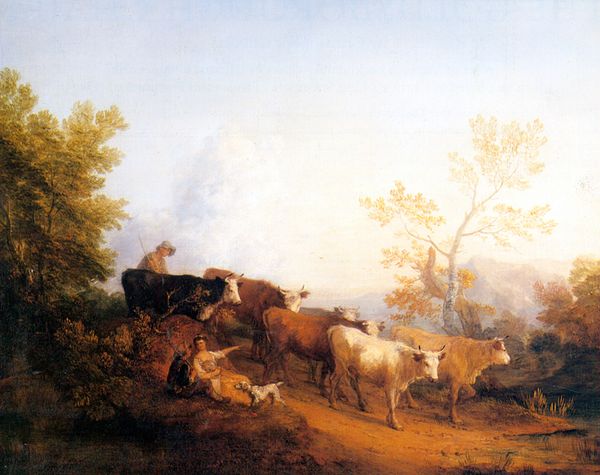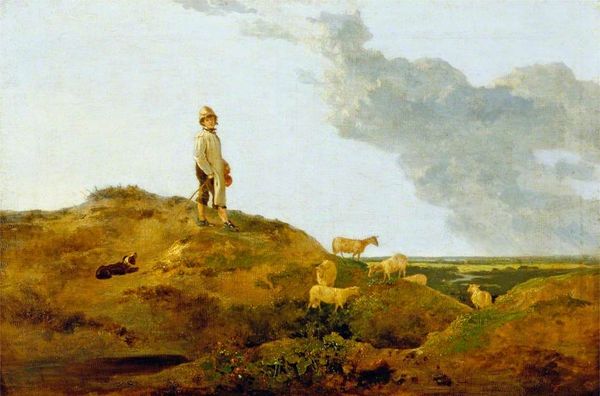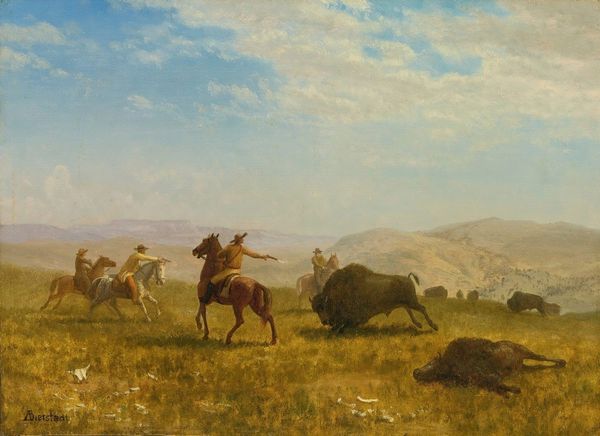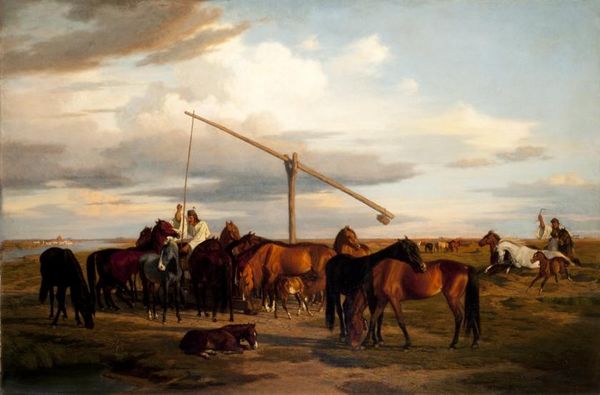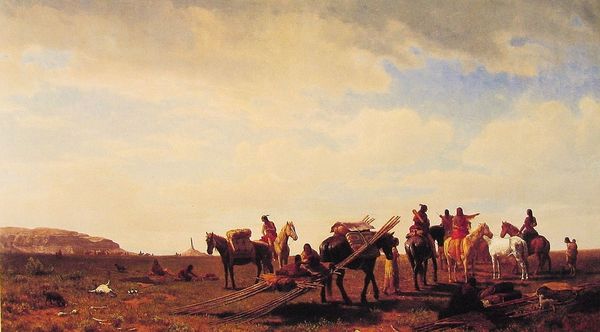
Copyright: Public domain
George Hemming Mason created this painting, called ‘Ploughing in the Campagna’, using oil on canvas. The painting's composition is dominated by a sweeping diagonal that pulls the viewer’s eye from the lower left, where a farmer guides a plough, towards the distant horizon on the upper right. The palette here is earthy, with browns and tans in the foreground, offset by the cool blues of the distant mountains. Mason uses light and shadow to create depth and texture, especially in the furrows of the ploughed field. This visual structure serves more than just aesthetic purposes; it reflects the 19th-century artistic concern with portraying the nobility of labor. The rhythmic lines of the ploughed earth and the musculature of the animals create a sense of movement and energy, almost as if Mason aimed to capture the very pulse of rural life. Note how the artist organizes the figures and animals in a way that leads the eye through the canvas. This technique embodies a sophisticated understanding of visual rhetoric, where each element is carefully placed to guide our understanding of the scene. It’s a powerful reminder that art is not just about what is depicted, but how it is depicted, and what ideas those formal choices convey.
Comments
No comments
Be the first to comment and join the conversation on the ultimate creative platform.

